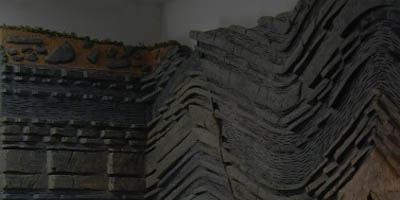Colloquium - Fall 2025 Seminars
Theories of Planet Formation
Date: September 30, 2025 3:30 – 4:30pm
Location: Slichter 3853
Presented by: Prof. Eve J. Lee — UC San Diego
The discovery of thousands of exoplanets revealed a huge variety in the sizes, masses, and orbital properties of planets outside of our solar system. I will discuss how the physics of gas accretion, dust-gas interaction, and star-disk-planet interaction can shape the observed diversity, providing explanations for some of the puzzling demographic patterns that have emerged in exoplanet science while placing our solar system in the larger Galactic context.
Retention of Habitable Atmospheres in Planetary System
Date: October 7, 2025 3:30 – 4:30 p.m.
Location: Young Hall 4222
Presented by: Prof. David Brain — University of Colorado Boulder
Planetary atmospheres are not static in time, and the many changes they experience can contribute to making a planet’s surface a more (or less) hospitable place. Interactions between a planet and its host star are especially important. They not only control the temperature of an atmosphere but can also drive atmospheric escape and atmospheric chemistry. In this presentation I describe ongoing efforts to understand what characteristics of a planet and its star, when combined together, allow the planet to retain an atmosphere that might be habitable at the planet’s surface. I’ll describe observations from planets in our solar system that inform this work, relevant modeling and observational efforts, and a team science effort dedicated to answering this guiding question.
Resolving storm and climate signals in the modern Bahamas using satellites and simulations
Date: October 14, 2025 3:30 – 4:30pm
Location: Slichter 3853
Presented by: Dr. Ceci Lopez-Gamundi — JPL
Recent advances in Earth observation and computational techniques allow for the rigorous examination of climate and coastal sediment dynamics at scale. Leveraging these novel methods, we investigate how severe storms and oscillations in Earth’s climate affect Great Bahama Bank (GBB), the world’s largest modern isolated carbonate platform. High-fidelity hydrodynamic simulations suggest that a single hurricane has a negligible effect on the broad-scale distribution of sediments on the platform top, which is predominately sculpted by fair-weather conditions. Nevertheless, multi-decadal satellite monitoring intimates that catastrophic hurricanes, when occurring in quick succession, may be responsible for the remobilization of mud months to years after their passage. On longer time scales still, interannual and decadal variations in suspended sediment are linked to windy El-Niño events, tidal-forcing Lunar Nodal Cycles, and the weakening of the Atlantic Meridional Overturning Circulation. Spatial variations abound too. Surprisingly, sediment lofting along the leeward margin is linked to wind, while tide dictates resuspension on the windward margin. Finally, we present evidence others have found in the Holocene sedimentary record of the same climate signals we observe in the modern – linking platform top sediment dynamics to slope sedimentation. In doing so, we shed light on how modern analogues can be used to constrain past climate signals and predict sedimentological responses in the future.
My List of the Five Most Important Things We’ve Learned from the Juno Mission
Date: October 21, 2025 3:30 – 4:30 p.m.
Location: Slichter 3853
Presented by: Prof. Jonathan Lunine — NASA JPL
The Juno spacecraft has been orbiting Jupiter since July 2016 and is completing its first extended mission. My personal list of the five most important things we’ve learned from the Juno mission during its prime and extended missions goes something like this: 1. Jupiter has a fuzzy core. 2. Moist convection really is a dominant feature of Jovian atmospheric dynamics 3. Water seems to be supersolar in abundance, at least down hundreds of bars pressure. 4. Europa has a platypus-shaped crustal melt region. 5. There is an active lava flow at Zal Montes on Io.
The Thermal Histories of Moons and Asteroids from Telescope Observations
Date: October 28, 2025 3:30 – 4:30 p.m.
Location: Young Hall 4222
Presented by: Prof. Katherine de Kleer — Caltech
The heat flow of a planetary body plays a major role in defining its evolution and current composition, driving processes from internal differentiation during its formation through geological activity at the current time. In this talk, I will describe how the ALMA (sub-)millimeter observatory and the James Webb Space Telescope are shedding light on the heat flow histories of satellites and small bodies. Thermal emission observations of asteroids provide information on the abundance and form of metals (ALMA) and minerals (JWST) on their surfaces. I will present ongoing asteroid programs aimed at providing a more complete compositional picture of asteroid surfaces, with implications for the early heating and differentiation of planetesimals. ALMA can also measure the isotopes of the volatile-forming elements, a key tool for studying the formation and evolution of objects in the Solar System. I will discuss sulfur and chlorine isotopes in the volcanic gasses of Jupiter’s moon Io in particular, and how they place constraints on the tidal heating and volcanism that Io experienced over the age of the Solar System.
TBA
Date: November 4, 2025 3:30 – 4:30 p.m.
Location: 3853 Slichter Hall
Presented by: Dr. Samuel Yee — Harvard
TBA
TBA
Date: November 18, 2025 3:30 – 4:30 p.m.
Location: Young Hall 4222
Presented by: Prof. Xinting Yu — University of Texas at San Antonio
TBA
TBA
Date: November 25, 2025 3:30 – 4:30 p.m.
Location: e.g., 3853 Slichter Hall
Presented by: Prof. Jun Korenaga — Young Hall 4222
TBA
TBA
Date: December 2, 2025 3:30 – 4:30 p.m.
Location: 3853 Slichter Hall
Presented by: Prof. Jean-Philippe Avouac — Center for Geomechanics and Mitigation of Geohazards
TBA

